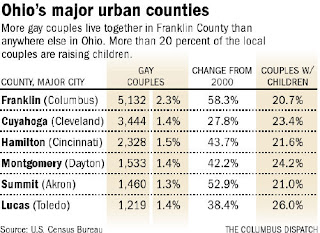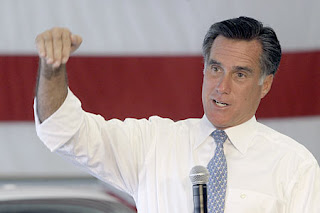

FOR IMMEDIATE RELEASE July 25, 2011
HRC Launches “On the Road to Equality” – Nationwide LGBT Equality Bus Tour
12 week tour across country comes as new poll shows increasing acceptance, more work to be done
WASHINGTON – The Human Rights Campaign – the nation’s largest lesbian, gay, bisexual and transgender (LGBT) civil rights organization – today announced “On the Road to Equality,” a nationwide bus tour to spread the message of equality by educating the American public and empowering LGBT people to become advocates for themselves and their families. The 12 week tour will travel to 17 cities in 11 states and D.C., with particular emphasis on the Midwest and South where there are limited legal protections for LGBT people and living openly and honestly can be difficult. Events will include everything from educational seminars on legal documents for families to community forums about family acceptance to participating in the University of Nebraska’s “Big Red Welcome.”
“We are in the midst of a cultural tipping point on lesbian, gay, bisexual and transgender issues and our job is to push the scale as far and as fast as we can toward fairness,” said HRC President Joe Solmonese. “The tour will serve as a powerful visibility tool and support the work of creating real and lasting change in these communities.”
Today HRC also released a nationwide poll that found Americans widely support LGBT equality issues but more work remains to be done – particularly in the South and Midwest where support lags other regions. The poll shows support for equal marriage at 51 percent (43 percent in the Midwest and South), in line with other national polls on the issue. Support for non-discrimination protections for LGBT people in employment, housing and public accommodations is strong nationally at 79 percent, as is support for protections against bullying in schools at 73 percent. Respondents also overwhelmingly say anti-gay discrimination is a problem (79 percent) and anti-transgender discrimination is a problem (74 percent).
Aside from policy questions, 57 percent of respondents say they would not be bothered if their child or grandchild was gay. Seventy-seven percent of men say they could be close friends with a gay man and 81 percent of women say they could be close friends with a lesbian. Overall, 64 percent say they could be close friends with someone who is transgender. Relating to the current debate over so-called “pray the gay away” therapies, only 24 percent of people think gay people can be made straight through psychotherapy or prayer. Full poll results can be found online at www.hrc.org/EqualityTourPress.
“The poll shows Americans believe in fairness but also that we have a long way to go in realizing that goal,” said Solmonese. “Our efforts on the road this summer and fall are a first step in bridging the gap between where LGBT people are now and achieving the dream of equality to which the vast majority of Americans aspire.”
At each tour stop, HRC will work with the local community to hold a variety of events. The bus will be accompanied by an exhibit offering primers on everyday life topics including: your family, your health, your rights, your community, your faith, your workplace and your story. Separate from the bus, HRC will also offer a variety of workshops and educational seminars with particular emphasis on workplace and healthcare equality, schools and bullying issues and religion and faith.
The tour schedule is as follows:
Aug 12-14 Salt Lake City, UT
Aug 19-21 Omaha & Lincoln, NE
Aug 26-28 Lawrence, KS & Kansas City, MO
Sept 1-5 New Orleans, LA
Sept 9-11 Austin & College Station, TX
Sept 16-18 Little Rock, AR
Sept 23-25 Louisville & Lexington, KY
Sept 30-Oct 3 Washington, DC
Oct 7-9 Atlanta, GA
Oct 14-16 Birmingham & Tuscaloosa, AL
Oct 21-23 Jacksonville, FL
Oct 28-30 Orlando, FL
Among the 11 states the “On the Road to Equality” tour will visit, none has a state-wide non-discrimination law including sexual orientation or gender identity. Additionally, none has any form of state relationship recognition and all have passed discriminatory constitutional amendments to ban marriage for same-sex couples. Many have laws prohibiting the positive discussion of gays and lesbians in schools and few have safe-schools laws that include LGBT students. More on the legal landscape in these states is at www.hrc.org/EqualityTourPress.
The Human Rights Campaign is America’s largest civil rights organization working to achieve lesbian, gay, bisexual and transgender equality. By inspiring and engaging all Americans, HRC strives to end discrimination against LGBT citizens and realize a nation that achieves fundamental fairness and equality for all.
# # #
Most states likely to spurn gay-marriage bandwagon By DAVID CRARY
AP National Writer
As hundreds of jubilant gay couples became newlyweds in New York over the weekend, their well-wishers included many far-flung gays wistfully aware that their own states may never willingly allow same-sex marriage.
"The victories in other states are always a little bittersweet," said Jeff Graham, executive director of the gay-rights group Equality Georgia. His state is one of 30 that have adopted constitutional amendments aimed at limiting marriage to one-man, one-woman unions.
In a few of those states - California, Oregon and Colorado, for example - activists hold out hope of repealing the bans. That outcome seems improbable, though, in many heartland and Southern states, and gay-rights leaders there are looking at more modest short-term goals.
They'll soon get a boost from a leading national gay-rights group, the Human Rights Campaign. It plans to launch a bus tour, starting Aug. 12 in Salt Lake City and ending Oct. 30 in Orlando, Fla., which will carry it through 11 states that ban gay marriage.
Stops along the way are planned in Nebraska, Kansas, Missouri, Louisiana, Texas, Arkansas, Kentucky, Georgia and Alabama - all with no statewide recognition of same-sex relationships and no state nondiscrimination laws protecting gays.
"We're going into the belly of the beast," said Fred Sainz, the Human Rights Campaign's vice president for communications.
Activists on the bus tour will be hosting forums and workshops, offering advice on how gay communities can empower themselves politically even on conservative turf, notably through local ordinances and initiatives.
Even as New York became the sixth and largest state to legalize same-sex marriage, gay and transgender people in many places "continue to face tremendous obstacles," said the campaign's president, Joe Solmonese.
"The bus tour intends to draw attention to these challenges and ensure that this rising tide lifts all boats," he said.
The tour will start from the Salt Lake City Pride Center, which provides advocacy and support services for gays across Utah.
Two years ago, Salt Lake became the first city in the state to offer housing and employment protections for gays and lesbians; it also has a "mutual commitment registry" that offers some local recognition to same-sex couples. Both measures exemplify goals that activists believe could be achievable in many communities in conservative states.
"We recognize that same-sex marriage may not be right around the corner," said the Pride Center's spokeswoman, Marina Gomberg. "But we see different areas where we can change our state and have changed our state."
As for the news out of New York, Gomberg said, "It's a boost of energy for me. A success in New York feels like a success here, because as a nation we're making progress toward equality and acceptance."
Conservative leaders in some of the states on the bus tour route expressed doubt that the advent of gay marriage in New York would have impact on their home turf.
"I don't believe it's a shot across the bow," said Jerry Cox, head of the Arkansas Family Council. "I would say it's an indication of how out of step New York is with the rest of the country."
Any push for gay marriage in Arkansas would face a difficult time with either major party. Gov. Mike Beebe, a popular Democrat who won re-election last year, recently told a gay-rights group that he can't see himself supporting same-sex marriage or civil unions.
With six states now recognizing same-sex marriage, there will be increasing pressure on Congress and the courts to dismantle the 1996 Defense of Marriage Act, which denies federal recognition to married gay couples. Even some conservatives believe the eventual endgame will be some move by Congress or the Supreme Court to require all states, including those with constitutional bans, to recognize such couples.
Such a prediction comes from Texas Gov. Rick Perry - who fought hard for a state amendment banning gay marriage - in his book, "Fed Up: Our Fight to Save America From Washington."
"Gay marriage will soon be the policy of the United States, irrespective of federalism, the Constitution, or the wish of the American people," he writes.
Kerry Messer of the conservative Missouri Family Network said only a federal court ruling could force his state to reverse a ban-gay-marriage amendment approved with 70 percent support in 2004.
"The attitudes haven't changed since then," Messer said. "If anything, I think they maybe have swung a little closer to the traditional marriage idea."
The bus tour will end in Florida, a swing state in presidential elections but with a heavily Republican legislature that shows little interest in advancing gay rights. In 2008, an amendment banning gay marriage passed with 62 percent support.
Nonetheless, the state has a vibrant gay community and several of its cities have established domestic-partnership registries on a local basis.
Brian Winfield, communications director for the gay-rights group Equality Florida, said he and his longtime partner, Kim Byrd, are considering getting married in New York this winter, then returning to Florida even though their union wouldn't be recognized there.
"Florida is moving in the direction of equality," Winfield said. "We've been able to carve out some victories in a very difficult environment."
As a prelude to the bus tour, the Human Rights Campaign conducted a national survey on Americans' attitudes on gay-rights issues. The lead pollster, Anna Greenberg of Greenberg Quinlan Rosner, said she was struck by the finding that acceptance of gays was virtually as high in the South as in other regions, even though Southern legislatures oppose gay rights.
"The elected officials tend to be more conservative than voters," she said. "But what I think you'll see is a diminishing of this issue as a wedge in electoral politics ... It becomes something you don't talk about."
Recently released U.S. Census data shows that the number of same-sex couple households is surging across the country, including in the conservative states on the bus tour route. In Georgia, for example, the number of same-sex households increased from 19,288 in 2000 to 29,844 in 2010.
So far, that trend has not been reflected by passage of gay-rights measures in the legislature. However, Graham, of Equality Georgia, is hopeful that might change as more gay families surface in Atlanta's northern suburbs and other areas that produce many of the state's political leaders.
For now, Graham sees little chance of repealing the state constitution's ban on gay marriage.
"However," he said, "there's going to come a point where Georgia's efforts to attract new business will run up against the discriminatory laws that we have here."
---
Andrew DeMillo in Little Rock, Ark.; Chris Blank in Jefferson City, Mo., and Chris Tomlinson in Austin, Texas, contributed to this report.
---
Online:
Human Rights Campaign: http://www.hrc.org
---
David Crary can be reached at http://twitter.com/CraryAP







